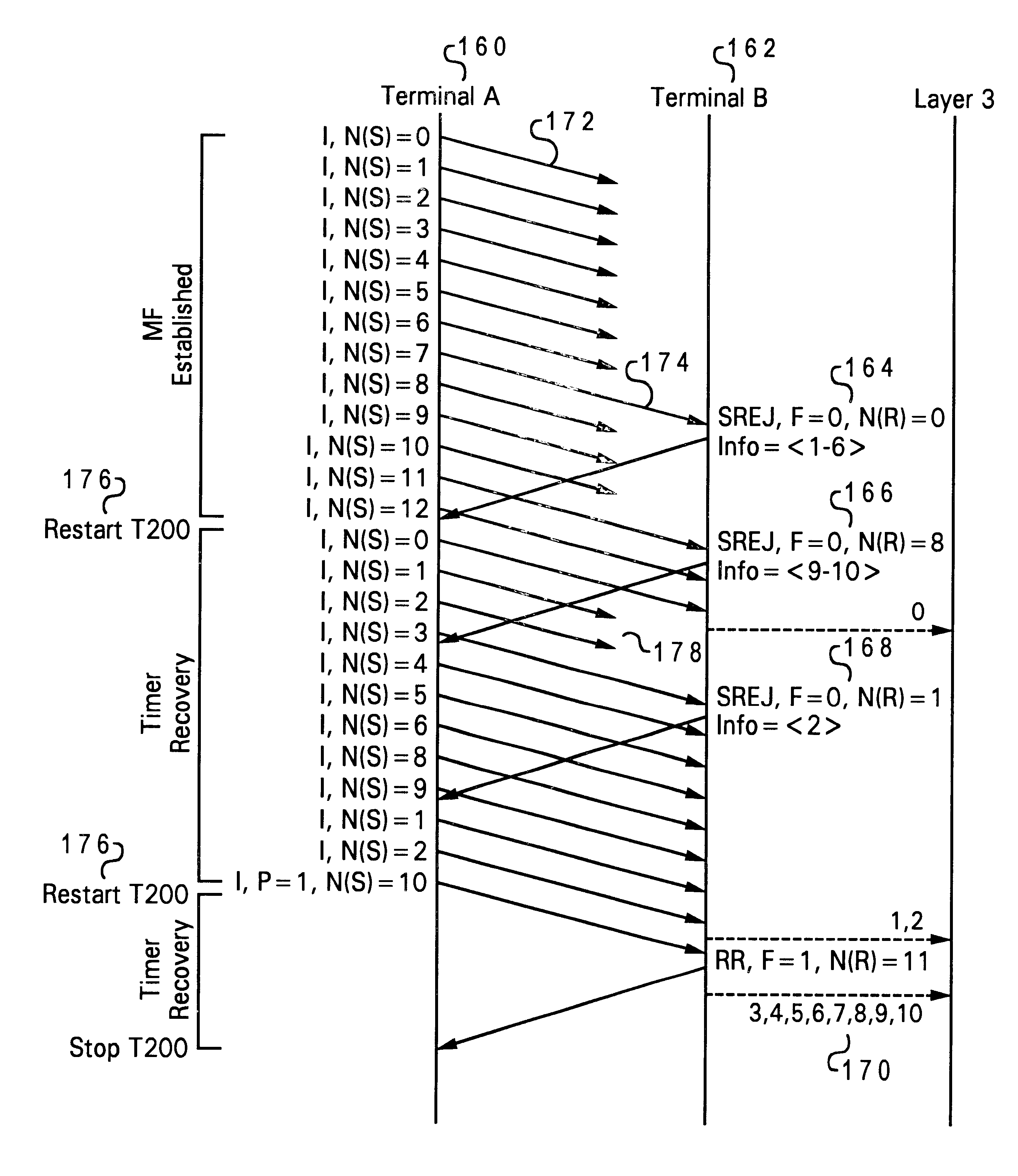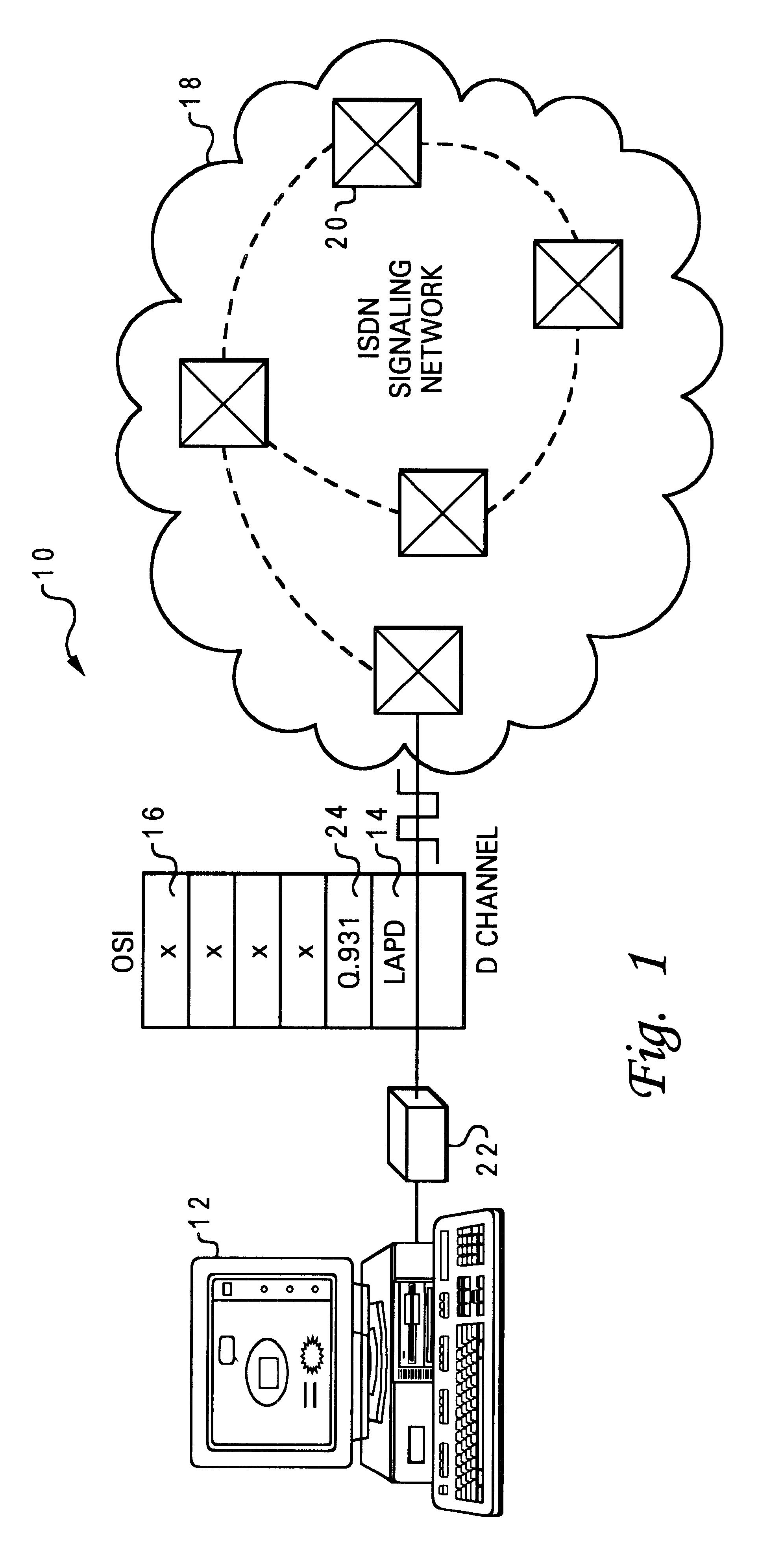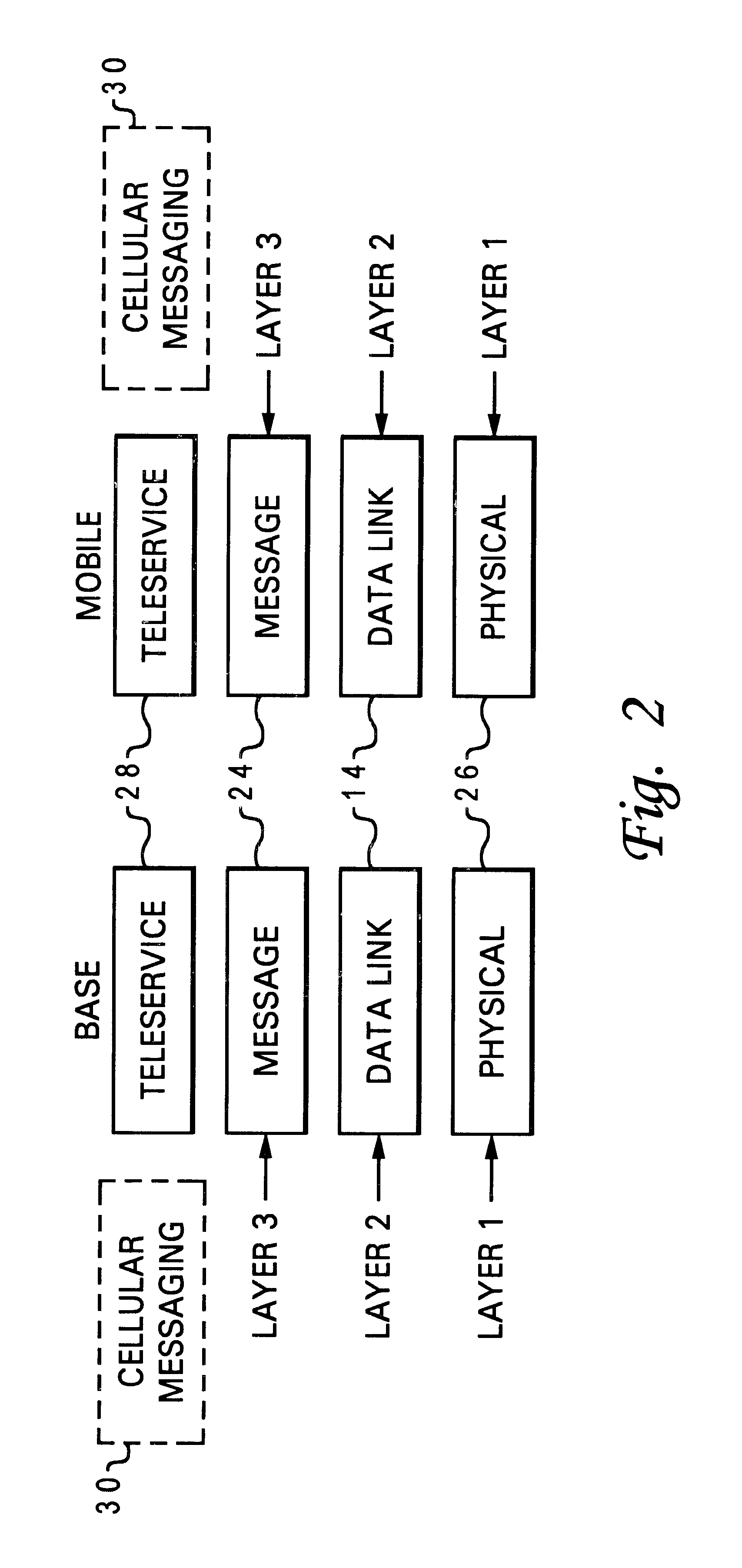Method and system for sequential ordering of missing sequence numbers in SREJ frames in a telecommunication system
- Summary
- Abstract
- Description
- Claims
- Application Information
AI Technical Summary
Benefits of technology
Problems solved by technology
Method used
Image
Examples
Embodiment Construction
With reference now to the figures and in particular with reference to FIG. 1, there is depicted a block diagram of an illustrative embodiment of a telecommunication system with which the present invention may advantageously be utilized. The illustrative embodiment depicted in FIG. 1 is a computer workstation linked into an Integrated Services Digital Network, however, as will become apparent from the following description, the present invention may also be applied to any type of data processing, telephony or information handling system.
As illustrated in FIG. 1, the telecommunication system 10 includes a computer workstation or data processing system 12 linked to an Integrated Services Digital Network (ISDN) 18. In the depicted embodiment, the computer 12 is connected or linked to a switch stream 20 within the ISDN 18 through a modem 22. To ensure that voice and signaling or data and signaling information can be transmitted simultaneously within the ISDN 18, multiple channels are pro...
PUM
 Login to View More
Login to View More Abstract
Description
Claims
Application Information
 Login to View More
Login to View More - R&D
- Intellectual Property
- Life Sciences
- Materials
- Tech Scout
- Unparalleled Data Quality
- Higher Quality Content
- 60% Fewer Hallucinations
Browse by: Latest US Patents, China's latest patents, Technical Efficacy Thesaurus, Application Domain, Technology Topic, Popular Technical Reports.
© 2025 PatSnap. All rights reserved.Legal|Privacy policy|Modern Slavery Act Transparency Statement|Sitemap|About US| Contact US: help@patsnap.com



